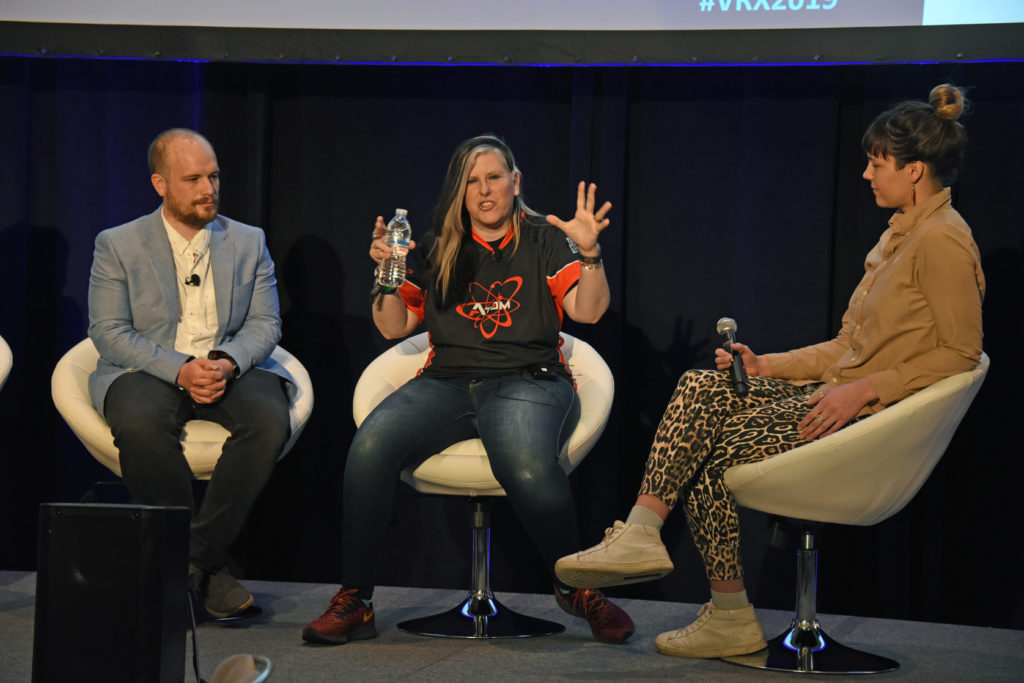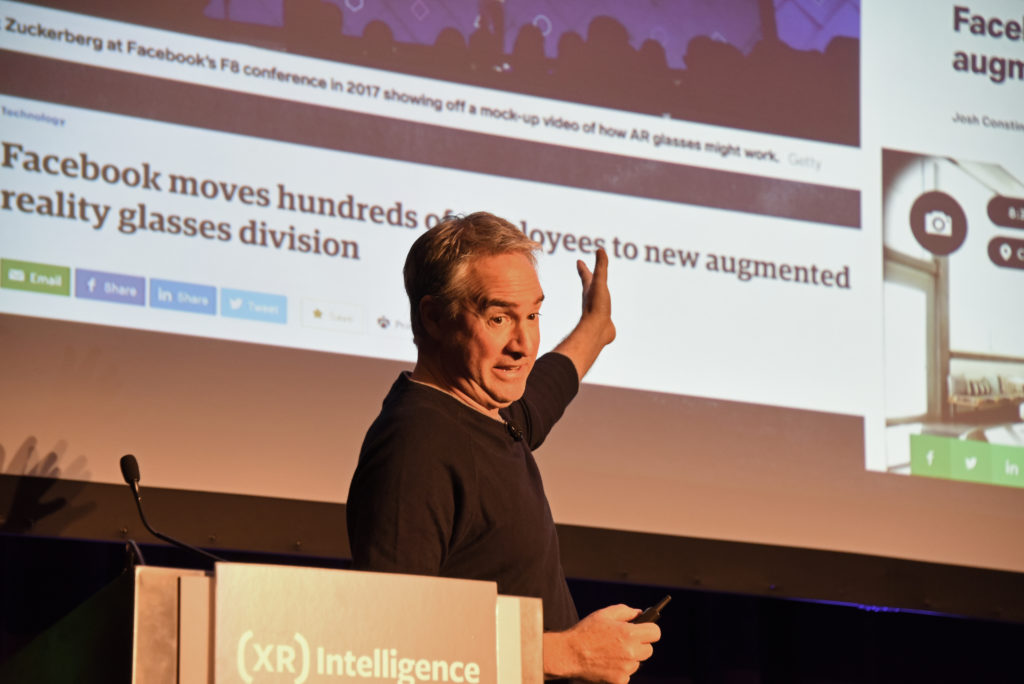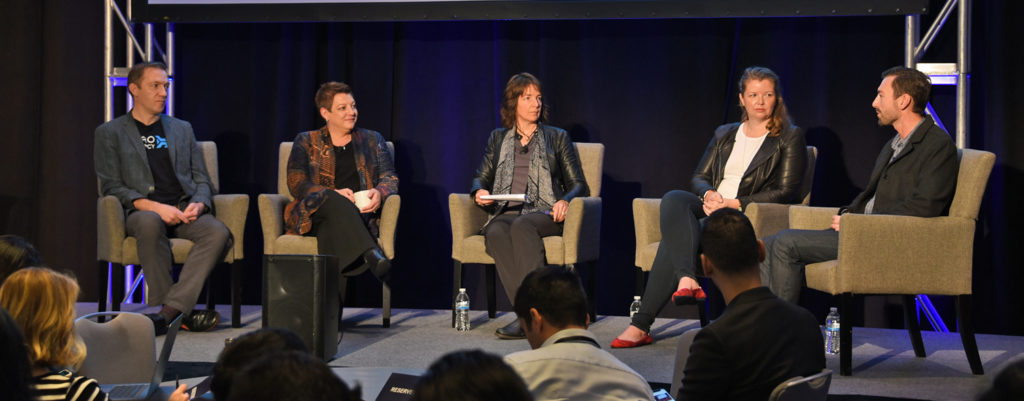
We’re Virtually There!
Industry Inches Toward Taking VR Mainstream
by Matt Harding
One thing was made clear at the VRX Conference & Expo, held Dec. 12-13 in San Francisco – there’s a lot of cool stuff happening in virtual, augmented and mixed realities (collectively XR, or extended reality). The part of the gathering that focused on location-based entertainment was promising. There is certainly no shortage of ideas as to what makes a great VR experience and how to draw in a crowd of fervent, game-loving fans.
During a VR esports panel, Chanel Summers, vice president of creative development at VRstudios, discussed the medium in ways that the coin-op industry would talk about billiards and darts.
VR esports is “all about competition,” Summers said. “Anything that has a score, is built for a league and tournament play, can create a community and belonging, and be social – that’s an esports experience.” Having a group of spectators is another characteristic of that, she said. Ryan Burningham, CEO and founder of Virtualities, noted that location-based entertainment has been a “clear winner” in monetizing esports in ways that other venues haven’t been.
Non-competitive options attract great interest as well. “The very best VR experiences make emotions bigger than you could ever get through a TV,” said Patrick O’Luanaigh, CEO of nDreams, a U.K.-based developer and publisher.
But it needs to go beyond great games and experiences…it needs to go mainstream. VR was a $2.4 billion industry in 2019, but most people still haven’t tried it in any capacity. However, it’s going to be the LBE/ amusements biz that changes this. As the industry continues to grow, more people will inevitably have access to the technology and will be able to try it.
“It’s very exciting and we’re going to see it continue growing in the next few years and reach a critical mass,” said Stephanie Llamas, vice president of strategy and head of XR at SuperData. She noted during her opening presentation at the VRX Conference that gamers are the biggest accelerators of VR. But location-based VR also attracts those who, for example, might be in an FEC because of its great food and beverage. That’s the best occasion to hook someone onto VR gaming who has never tried it.
“Location-based entertainment does a great job of putting the tech in front of people who otherwise wouldn’t have proactively went after it,” Llamas explained.

Zero Latency’s vice president of business development Phil Martin led an interesting presentation that mirrored that same idea – the need for VR to go “mainstream.” A few ways to do that, he noted, were to focus on replayability and motivate players to do so; inspire players to tell others about their experience; and encourage enthusiasts. It’s a lot easier, he said, if locations can get one person to visit 12 times a year than finding 12 people to visit once a year.
“The real challenge is taking VR mainstream,” he explained. “We want to bring this experience to everyone.” Martin said virtual reality needs to become part of the culture – another “something” people can do on a Friday night in the same way someone might suggest going bowling, to a bar or go-karting.
When, and if, that might truly come to fruition, is anyone’s guess.

It’s also the guess of Ted Schilowitz, the futurist in residence at Paramount, whose job it is to think of how technology will look in the future. He seems to think it’s on the horizon.
“We’re heading past big boxy headsets,” he noted. “Everyone’s looking at how we get beyond the box on the face.” Schilowitz likened that necessary innovation with wireless earbuds – essentially saying simpler, glasses-style headsets will be the future of XR.
He also noted, as others did, the current success of Beat Saber, the VR rhythm game with its “easy to learn, fun to master” gameplay. From the relatively new indie game studio based in Prague – Beat Games – Beat Saber took home Best VR Game at The Game Awards in 2019.
“Beat Saber is our Pac-Man moment for VR,” Schilowitz proclaimed.
No matter what, as O’Luanaigh of nDreams explained, the games and experiences are getting better. And that’s all that really matters – for players, for operators and for the future of this sector of the industry.
“Games are going to have bigger budgets as VR continues to grow,” he said. “Big-name licenses will be a brilliant way of attracting players. Games are critical to the long-term success of VR, and location-based entertainment is very exciting because you can do stuff you can’t do at home.”
The big takeaway on VR: If you have the money, include an option or two in your facility – maybe an attendant-free unit similar to typical arcade machines and an arena-style unit great for competition. The ROI is already there on a lot of products. Focus on bringing in gamers through esports tournaments or other social gatherings, and be a part of the push to get virtual reality into the mainstream.

